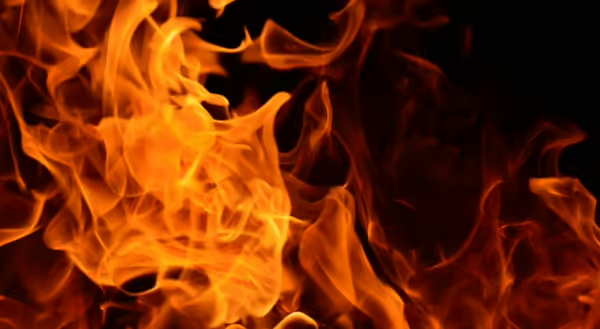
When I was a child, I remember fondly the US Forest Service (USFS) forest fire prevention commercials containing the slogan, “only you can prevent forest fires.” We were a camping family, so we were careful to follow safety rules when we cooked with fire at our campsites. As a student and a young professional in the natural resources field, I learned about prescribed fire or controlled burns to manage prairie habitat and vegetative communities. I always wondered, why the discrepancy in advice?
To explore, let’s examine the history and purpose of fire in our landscape. The USFS forest fire prevention campaign began in the 1940s. With limited firefighters, officials decided to begin a public campaign in an attempt to encourage the public to play an active role in protecting our forests, our property, and our lives from forest fires, especially in the west. The educational campaign focuses on convincing individuals to take personal responsibility for:
- maintaining safe campfires
- using lawn equipment and vehicles safely
- ensuring proper conditions when burning yard debris
- safeguarding your personal property from wildfire risk
In 1947, the USFS forest fire prevention campaign had a slogan of “Remember…Only YOU Can Prevent Forest Fires, “and led to widespread thinking of complete fire suppression - all fires are bad. Within the past 20 years, we have had a changing sentiment about the utilization of fire as a habitat management tool, and the slogan was changed in 2001 to “Only You Can Prevent Wildfires.” This change attempted to shift the message to focus on “unplanned and unwanted outdoor fires.”
Anthropogenic fire has been documented as being used as a survival tool by early Native Americans. Fire was used to encircle and concentrate animals used for food and other resources. Early settlers used fire to clear brush and dead vegetation, and ultimately, cycle the nutrients and energy in an ecosystem (McClain et al, 2021).
Today, prescribed fire, an intentional fire that is planned and carefully executed on a specific area, is used in many habitat management applications by both private landowners and public lands professionals. Intentionally setting fire to land seems at odds with the US Forest Service’s messages. However, the USFS message is targeted directly at wildfires, those fires that are not planned; are uncontrolled, unpredictable; and destroy valuable property, natural areas, and human life.
Through research, we know that without fire, ecosystem quality decreases – woody species begin to encroach grasslands and prairie ecosystems, sun-loving plants are restricted to small patches, and invasive species begin to overtake our native species.
Prescribed fire can be a tool in your toolbox when working as a steward of your land – whether it be prairie grasslands or woodlands. As Aldo Leopold laid out, landowners and farmers can encourage wildlife habitat with “creative use of axe, plow, cow, fire….” He explained that the axe can be used for brush management; the plow can be used for disking to set back natural succession of plants for wildlife; the cow can be used responsibly in rotational grazing to reduce thick grasses and allow food-producing forbs (flowers) to grow; and fire can be used as a natural process to remove thick vegetative thatch, cycle nutrients in the soil, attract herbivores to new growth, and encourage regeneration of oak and hickory tree species (Leopold, 1933). Before considering the use of prescribed fire, one must consider goals for the property. There may be instances where fire is not the tool you should use – when you are in close proximity to structures where fire or smoke is a safety hazard, if local ordinances or state and federal regulations prohibit you to do so, or if the plant composition requires another type of management.
If you’re considering a prescribed burn on your property, Illinois Extension has a multitude of resources to help you understand how to plan and execute your burn. Be sure to be well-trained and have plenty of hands to assist.
Resources
Burning Basics: An Intro to Prescribed Fire
Prescribed Fire Roles and Responsibilities
Prescribed Fire Tools and Equipment
Prescribed Burning Basics - Wind's Influence on Fire Behavior
Effects of Prescribed Fire on Vegetation and Wildlife
Sources
Leopold, Aldo. Game Management. The University of Wisconsin Press, 1933.
William E. McClain, Charles M. Ruffner, John E. Ebinger, Greg Spyreas "Patterns of Anthropogenic Fire within the Midwestern Tallgrass Prairie 1673–1905: Evidence from Written Accounts," Natural Areas Journal, 41(4), 283-300, (18 October 2021)